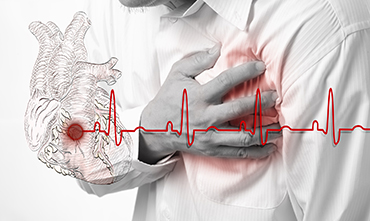Valvular Heart Disease: Understanding, Causes, and Treatment

What is Valvular Heart Disease?
The heart has four chambers—the left and right atrium (upper chambers) and the left and right ventricle (lower chambers). At the exit of each chamber, four heart valves ensure continuous, one-way blood flow:
- Tricuspid Valve – between the right atrium and right ventricle
- Pulmonary Valve – between the right ventricle and pulmonary artery
- Mitral Valve – between the left atrium and left ventricle
- Aortic Valve – between the left ventricle and aorta
These valves open and close with each heartbeat, ensuring oxygen-poor blood is pumped to the lungs to receive oxygen and oxygen-rich blood is sent throughout the body. Valvular heart disease occurs when one or more of these valves fail to open or close properly, affecting blood circulation. If multiple valves are involved, it is called multiple valvular heart disease.
Types of Valvular Heart Disease
- Valvular Stenosis (Narrowing of Valves)
When a valve becomes stiff or thickened, the opening narrows, restricting blood flow:
🔹 Tricuspid Valve Stenosis – Causes blood buildup in the right atrium, affecting circulation.
🔹 Pulmonary Valve Stenosis – Reduces oxygen-poor blood flow to the lungs, making the heart work harder.
🔹 Mitral Valve Stenosis – Limits oxygen-rich blood flow to the left ventricle, causing fatigue and shortness of breath.
🔹 Aortic Valve Stenosis – Restricts blood flow to the body, potentially leading to left ventricular hypertrophy (thickening of the heart wall). - Valvular Prolapse (Slipping Out of Place)
Occurs when valve flaps bulge or do not close properly, disrupting blood flow:
🔹 Mitral Valve Prolapse (MVP) – The most common type, allowing blood leakage back into the atrium (also called floppy valve syndrome).
🔹 Tricuspid, Pulmonary & Aortic Valve Prolapse – Less common but may also cause regurgitation (backflow of blood). - Valvular Regurgitation (Leaking Valves)
When a valve doesn’t close completely, blood leaks backward, reducing circulation efficiency:
🔹 Tricuspid Valve Regurgitation – Blood leaks back into the right atrium, leading to enlargement.
🔹 Pulmonary Valve Regurgitation – Causes oxygen-poor blood to mix with oxygen-rich blood, reducing oxygen delivery.
🔹 Mitral Valve Regurgitation – Leads to increased pressure in the left atrium and possible fluid buildup in the lungs.
🔹 Aortic Valve Regurgitation – Oxygen-rich blood leaks back into the left ventricle, making the heart work harder.
Causes of Valvular Heart Disease
- Congenital Causes (Present at Birth)
🔹 Congenital Valve Defects – Abnormal valve size, shape, or attachment.
🔹 Bicuspid Aortic Valve Disease – The aortic valve has only two flaps instead of three, increasing the risk of stenosis and regurgitation.
🔹 Marfan Syndrome – A genetic disorder affecting connective tissue, which can cause mitral valve prolapse and aortic valve regurgitation. - Acquired Causes (Develop Later in Life)
🔹 Rheumatic Fever – An inflammatory disease that damages heart valves, often following untreated strep throat.
🔹 Infective Endocarditis – Bacterial infections that damage the heart’s inner lining and valves.
🔹 Radiation Therapy – Cancer treatments can lead to valve stiffening and narrowing.
🔹 Age-Related Degeneration – Normal aging can cause valve wear and tear. - Other Causes
🔹 Coronary Artery Disease (CAD) – Can weaken heart function and contribute to valve dysfunction.
🔹 Heart Attacks – Can damage valve-supporting muscles, leading to regurgitation.
🔹 Cardiomyopathy – Weakens the heart muscle, affecting valve function.
🔹 Metabolic Disorders – High cholesterol and calcium deposits can harden heart valves.
Symptoms of Valvular Heart Disease
Many patients don’t notice symptoms until blood flow is significantly reduced. Common symptoms include:
✔ Chest pain or pressure (angina)
✔ Palpitations (irregular or rapid heartbeat)
✔ Shortness of breath, especially during physical activity
✔ Fatigue and weakness, making daily tasks difficult
✔ Dizziness or fainting, common with aortic stenosis
✔ Swelling in the abdomen, feet, or ankles, due to fluid retention
⚠ Women are more prone to rheumatic fever-related valve disease and should be cautious of strep infections. Pregnant women with heart disease should consult a specialist, as pregnancy affects blood flow and pressure.
Diagnosis of Valvular Heart Disease
Diagnosis begins with a physical examination, where a doctor listens for a heart murmur (abnormal sounds) using a stethoscope. Further tests include:
🩺 Echocardiogram (Heart Ultrasound) – Detects valve structure and function
🩺 Angiogram – Uses X-ray contrast dye to evaluate heart function
🩺 Electrocardiogram (ECG) – Monitors heart rhythm and electrical activity
🩺 Chest X-ray – Identifies heart enlargement
🩺 Stress Test – Assesses how the heart functions under exertion
Treatment Options for Valvular Heart Disease
- Medications
- Diuretics (Water Pills) – Reduce fluid buildup in the body
- Blood Thinners (Anticoagulants) – Prevent clots and stroke risk
- Antiarrhythmics – Regulate irregular heartbeats
- Medications for High Blood Pressure & Heart Failure
- Surgical & Minimally Invasive Procedures
- Balloon Valvuloplasty – A balloon catheter widens narrowed valves
- Annuloplasty – Repairs an enlarged valve ring
- Valve Repair Surgery – Corrects damaged valves without replacement
- Valve Replacement Surgery – Involves either:
- Mechanical Valves (long-lasting but require lifelong blood thinners)
- Biological Valves (made from human or animal tissue, less durable but no blood thinners needed)
- Transcatheter Aortic Valve Implantation (TAVI/TAVR) – A minimally invasive alternative to open-heart surgery
- Lifestyle Changes
✔ Quit smoking to protect heart health
✔ Stay active with doctor-approved exercises
✔ Maintain a healthy weight to reduce strain on the heart
✔ Eat a heart-friendly diet rich in whole grains, vegetables, and lean proteins
✔ Limit alcohol intake
✔ Manage stress through relaxation techniques
Living with Valvular Heart Disease
Many patients live full lives with proper medical care and lifestyle adjustments. If you have valvular heart disease, consider:
✔ Regular check-ups to monitor heart function ✔ Preventing infections – Discuss antibiotics before dental work ✔ Flu and pneumonia vaccines to protect heart health ✔ Cardiac rehabilitation programs to improve recovery and heart strength




